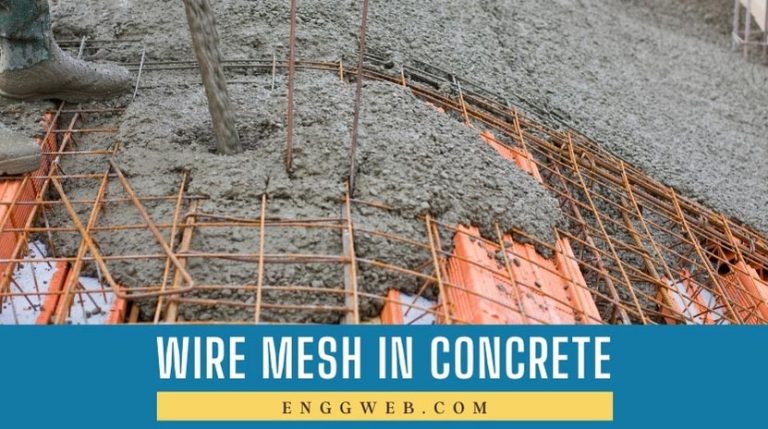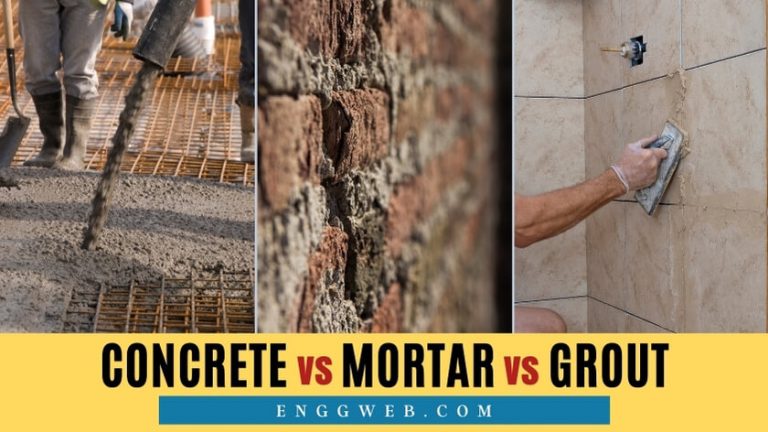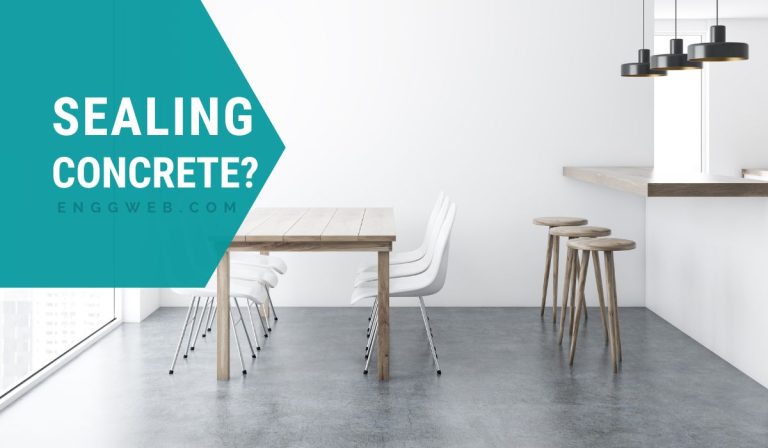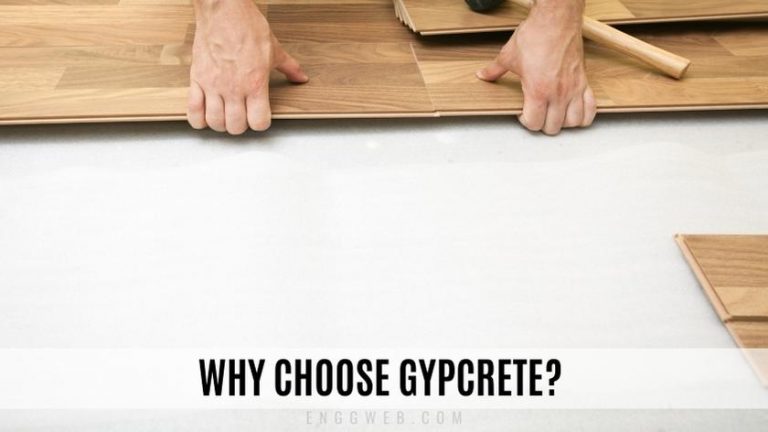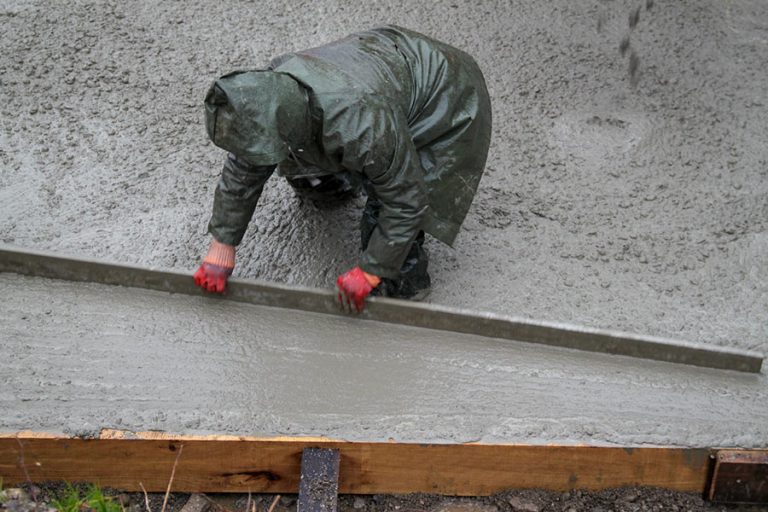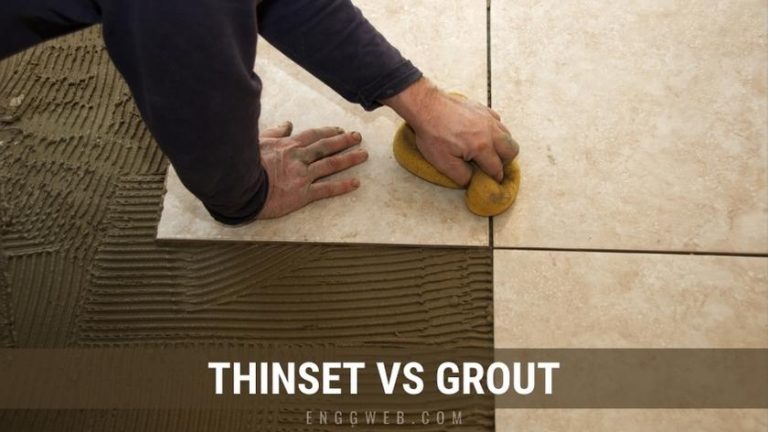Fiber Mesh Concrete – The Complete Guide
Fiber mesh concrete is a state-of-the-art alternative to the traditional wire mesh or unreinforced concrete primarily used in flooring applications. Does it save time and money, though, and is it better than wire mesh concrete?
Contents
What is Fiber Mesh Concrete?
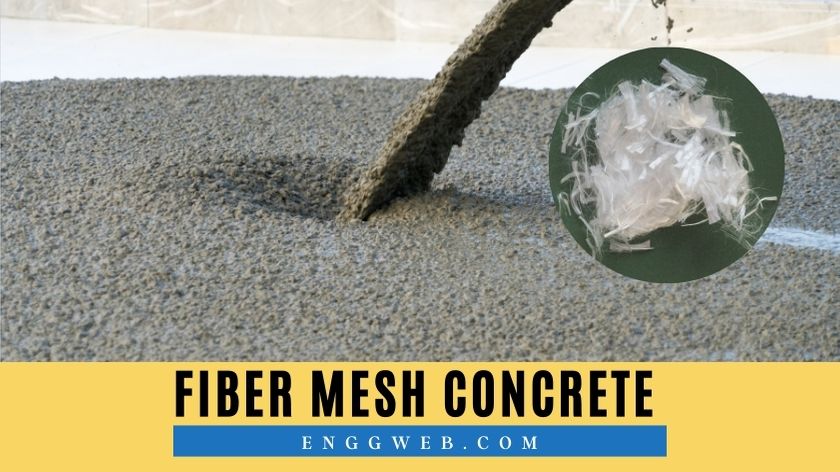
Fiber mesh concrete, also known as fiber reinforced concrete, has fibers as one of the mix design constituents instead of using wire mesh. Both macro fibers and microfibers are used for this purpose, although the application of each of these differs. Macro fibers are large fibers that add flexural strength to the concrete. They can be made of metal or specialized polymers. Microfibers work to prevent hairline cracks due to excessive bleeding and are always made of specialized synthetic polymers.
Macrofibers
Macrofibers are large fibers that usually have a stepped or ridged profile or a combination of the two. These fibers are made of metal (steel or stainless steel) or synthetic polymers and increase the concrete’s tensile strength. In some cases, the concrete’s tensile strength can match its compressive strength.
As the concrete sets, the resulting crystalline structure forms around the macro fibers, gripping on to them in the process. In areas where the concrete experiences large tensile forces, cracks would start forming. Without macro fibers present in the mix design, these cracks would travel through the structure’s profile, usually leading to failure. When macro fibers are included in the mix design, they halt these cracks’ progress by holding the two sides of the crack together. That’s the reason for the ridged or stepped profile – it allows for better grip on the concrete.
Microfibers
Microfibers are tiny, soft fibers that are generally smooth and straight. These fibers prevent hairline cracks caused by excessive bleeding or drying shrinkage and work much like their larger counterparts. As the concrete dries, it grips onto these fibers. When cracks start to form, they run into these fibers, where they are then halted. In this manner, microfibers improve surface finish and make for a more “forgiving” concrete that is easier to work with.
Fiber Mesh Applications
The addition of macro fiber reinforcement to concrete increases flexural in the same manner that wire mesh reinforcement does. This is ideally suited to flooring applications, where the floor slabs are not suspended but at ground level. While strong in compression, concrete is weak in tension and thus prone to cracking in areas where flexural strength is needed. Adding fiber reinforcement to the concrete formulation improves flexural strength and reduces the need for construction joints.
Macro fibers are also used in other applications, such as beams and other structures that require high flexural strength. Fibers do not replace metal reinforcement in any structure other than flooring slabs, but it does reduce the amount needed.
Microfiber reinforcement is most often used in plaster applications to prevent the hairline cracks associated with excessive bleeding and drying shrinkage. Microfibers are also used in shotcrete applications. Here, they are added to the mix design at the nozzle since earlier addition would clog the apparatus.
Wire Mesh vs. Fiber Mesh in Concrete
What are the differences and pros and cons of fiber mesh compared to wire mesh concrete?
Differences
Wire mesh is the traditional method of improving concrete’s flexural strength in flooring applications. Here, a large sheet of wire mesh is placed in the area where the slab will be constructed and kept in place with spacers and wire ties. Once the wire mesh is in place, fresh concrete is poured onto and around the mesh. It is consolidated and compacted, usually with poker vibrators.
Fiber mesh is a relatively new alternative to the traditional wire mesh. These fibers are added to the fresh concrete during mixing. This fiber-containing concrete is poured and consolidated at the job site in the same way traditional concrete would be handled.
Pros and Cons
Wire mesh is cumbersome to work with. Large metallic mesh sheets are offloaded in stacks or rolls on-site, taking up precious space in often constricted areas. The material in these stacks or rolls often gets intertwined and must be loosed again with great effort. Once untangled, the mesh must be cut to size and physically carried to the pour. Here, the mesh is placed and held in place with spacers and wire ties. This process is highly labor-intensive and cumbersome. A further frustration is that the wire mesh often moves when the fresh concrete is poured on it and consolidated, weakening the final product’s tensile strength.
In contrast, fiber reinforcement does not require any space on-site and is not labor-intensive. An operator will add the fibers to the fresh concrete at the back of the ready-mix truck during the final mixing stages. They usually come in water-soluble bags and set weights. For this reason, the mix design usually states a certain number of bags per truck. Once added, these fibers require time to mix through properly, usually at the maximum mixing speed the truck can accommodate. If not given adequate time and mixing speed, the fibers will form clumps and not disperse through the concrete properly. This is especially true for macro fibers with stepped profiles.
Once at the Jobsite, the fiber reinforced concrete is poured and consolidated in the same manner traditional, unreinforced concrete would be handled.
Traditional wire mesh is prone to corrosion since it is usually made of plain steel. Stainless steel is used in some cases, but given the right conditions, this could also rust. Corroded metal reinforcement causes spalling in concrete structures, weakening the structure and compromising the safety of all who use it. In contrast, synthetic fibers are corrosion resistant. They would thus outlast traditional wire mesh reinforced concrete in areas prone to corrosion.
Fiber-reinforced concrete often costs the same per cubic meter as wire mesh reinforced concrete. However, fiber-reinforced concrete requires less labor and less time spent on-site, leading to drastic savings across the project. Synthetic fiber technology and manufacturing practices have recently improved, rendering synthetic fibers cheaper than wire mesh reinforcement in many cases.
Is fiber mesh better than wire mesh? Why?
In flooring applications, yes, it is. As seen in the previous section, fiber reinforced concrete removes many of the frustrations and Jobsite inaccuracies associated with wire mesh reinforcement. It is also often cheaper to use, both in cost per cubic meter and labor cost.
When using synthetic fibers, corrosion resistance is an added benefit. In projects where corrosion resistance is required, this further reduces the cost compared to wire mesh reinforced concrete. Corrosion-resistant wire mesh is made from stainless steel, which is much more expensive than steel mesh.
Fiber mesh concrete is also suitable for other applications, such as pillars, bridges, and beams. However, these applications still require steel reinforcement.
Is concrete with fiber stronger?
Fiber-reinforced concrete is stronger than unreinforced concrete. Compared to wire mesh reinforced concrete, it usually has the same flexural and compressive strength. With the latest technology available in synthetic fibers, fiber reinforced concrete sometimes has greater flexural strength than wire mesh reinforced concrete.
Another benefit of fiber reinforced concrete is that it requires fewer construction joints than traditional unreinforced concrete. When used correctly, you can lay large warehouse flooring slabs without any construction joints. Minimizing construction joints prolongs the lifespan of both the floor and the forklifts driving over it. The reason behind this is simple: forklifts have hard wheels. When they drive over construction joints, they impact the joint’s edges, damaging the floor. In areas frequented by forklift travel, large holes or damaged patches will appear on the floor. When the forklift drives over these areas again, the jagged edges damage the wheels, which must then be replaced. Maintenance on both the floors and the forklifts becomes expensive. Eliminating the need for construction joints drastically decreases the maintenance cost involved in warehousing.
How much fiber do I add to concrete?
The fiber dosage depends on the project and the fibers used. Synthetic fibers generally come in bags of 600g or 1000g each. Manufacturers usually recommend one bag per cubic meter of concrete. Readymixed concrete trucks usually have a capacity of 6 or 8 cubic meters, which means you would typically add between six and eight bags of fiber to a truck.
That said, applications differ, and the recommended fiber dosage along with them. Some applications would call for more fiber, while others need less. There is also a critical fiber dosage, above which the additional fiber shows no advantage. Adding too much fiber to the mix design could lead to fiber interlock. The fibers get entangled and are no longer effective in their purpose.
Advantages of Fiber Mesh Concrete
- Fiber mesh concrete is quicker and easier to work with.
- Fewer things can go wrong on-site when using fiber mesh concrete.
- Fiber mesh concrete requires adequate mixing time and energy to disperse the fibers properly.
- Synthetic fibers are corrosion resistant, while wire mesh concrete isn’t.
- Fiber mesh concrete is often cheaper than wire mesh concrete.
- The maintenance cost involved in warehousing decreases since the need for construction joints decreases or is eliminated.
- Compared to wire mesh concrete, it requires less space on-site and fewer deliveries, freeing up precious space and decreasing traffic.
Does Concrete With Fibre Need Rebar?
If you are using fiber mesh, you don’t need rebar for flooring, patio, and sidewalks. However, for areas subjected to heavy load, we recommend you use rebar in addition to the polymer mesh. The synthetic fiber mesh reinforces the concrete and reduces cracking. However, you need steel rebar for high tensile strength applications.
So you should be fine without rebar for pedestrian areas, but you will be pushing the limit when it comes to driveways.
Hence this question isn’t as clear-cut or straightforward as it seems. In short, it depends on the situation. Generally, fiber-reinforced floor slabs don’t require wire mesh reinforcement since these two components fulfill the same purpose – preventing shrinkage cracks and increasing tensile strength.
In other structures, such as pillars and overhanging slabs, steel reinforcement is still essential since the structure requires additional flexural strength in specific areas. Fibers cannot fulfill this role and would generally not be used in these applications.
How to Use Fiber Mesh in Concrete?
Fiber mesh concrete is easy to work with and doesn’t require specialized site personnel in the same way that wire mesh reinforced concrete does. It does not require a specialized concrete mix design – the fibers are added to the standard mix design. As long as the concrete is sufficiently cohesive to prevent segregation, the fibers will disperse through the mix design and remain in place.
Fiber reinforcement is added during mixing. Before adding the fiber, count out the number of bags needed for the mix and only take these to the back of the truck. Doing this eliminates dosage errors when the operator gets distracted. Once the concrete is thoroughly mixed, add the fibers to the back of the truck, one bag at a time. It’s not necessary to throw these deep into the mixing drum – the mixing action is such that it will disperse through the entire drum regardless of where it enters. Once all the fiber is added, set the mixing action to maximum revolutions and let it run at this speed for at least 5 minutes. Ten minutes is preferable, ensuring that the fiber gets dispersed adequately through the concrete.
On-site, pour the concrete as would be done for unreinforced concrete. Consolidate the concrete using your method of choice. Poker vibrators would generally be used, but large applications could also call for beam vibrators. In structures with congested reinforcement, form vibrators may be used. Once consolidated, you may see a bit of fiber poking up out of the concrete. This is normal. Surface finishing will take care of these stray fibers, smoothing them into place and leaving a smooth, neat surface.
While hardening, protect the concrete surface as is typical in flooring applications. Ponding, spraying water, or covering with plastic are standard methods used. Once the concrete reaches final set, construction joints can be cut if necessary. Specialized fiber-reinforced mix designs eliminate the need for construction joints to a large extent.
Cost of Fiber Mesh
The cost of fiber mesh concrete per cubic meter is usually similar to that of wire mesh reinforced concrete. With the latest technology developments, fiber reinforced concrete is sometimes cheaper than wire reinforced concrete, especially when corrosion resistance is specified for the project.
Using fiber-reinforced concrete instead of wire mesh concrete decreases the costs on-site, specifically in the amount of labor needed and the time taken to pour the concrete. Fiber-reinforced concrete does not require the time-consuming task of measuring, cutting, and placing wire mesh and is thus much faster and cleaner to pour.
Since fiber reinforced concrete often requires fewer construction joints than the traditional alternative, it saves on the cost of cutting these joints as well. In warehousing applications, the elimination of construction joints leads to lower maintenance costs since both the flooring and forklift wheels last longer.
While specialized fiber mesh concrete may cost more per cubic meter than wire reinforced or unreinforced concrete, the long-term savings garnered from its use are worth the investment.
Closing Thoughts
Fiber mesh concrete is an alternative to wire mesh concrete, suitable for flooring applications. Utilizing this state-of-the-art technology leads to savings in project duration, labor needed on-site, structure lifespan, and overall project cost. This concrete is easy to work with and is revolutionizing flooring applications.

